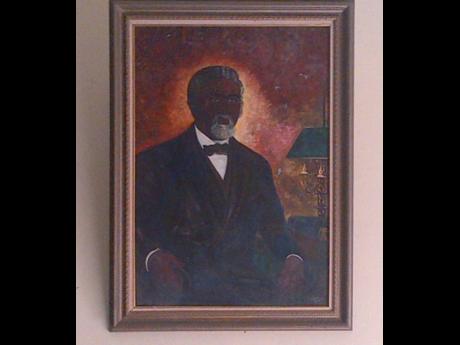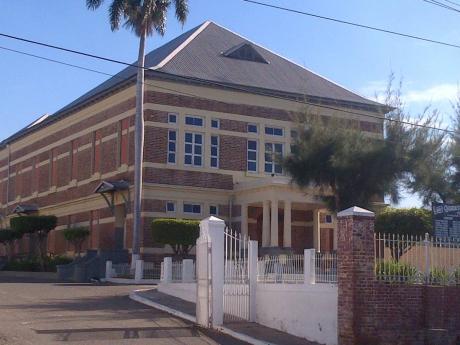The origin of the Baptist Church in Jamaica
Paul H. Williams
Sunday Gleaner Writer
DURING THE American War of Independence, enslaved black people were promised their freedom if they fought for the British against the separatists. When the British lost the war, these enslaved people who fought for them were offered free passage on ships to the West Indies. George Liele was one of those who chose to come to Jamaica.
Liele was born about 1750 in Virginia, but eventually resided in Kiokee, Burke County, Georgia. His holder was a Christian man named Henry Sharp. Liele himself was converted in 1773 by a reverend Matthew Moore. He joined the Baptist Church in which he was baptised. He soon began to preach even to entire white congregations. Liele was therefore, in Baptist tradition, recognised as being called by God to preach. His lack of a formal training for the ministry was not a deterrent as among the Baptists, formal theological training was not a requirement.
He preached in Reverend Moore’s church and that was how Liele began his ministry in America. He preached on the plantations up to Augusta, along the Savanna River, on both sides of the river in South Carolina, as well as in Georgia. He was formally ordained and licensed to preach in 1775, after which he was called Reverend George Liele. Two years before his ordination, Liele had organised the first black church in America in Augusta at Silver Bluff on an estate owned by Jonathan Bryan of South Carolina.
This church did not last long as Liele was prevented from preaching to the enslaved after the outbreak of the War of Independence, along with other blacks who had fought with the British. Liele had to take refuge behind British lines on Tybee Island in the Savannah River where he continued his preaching and planted a congregation. His holder, now an officer in the army, finally gave him his freedom.
Before leaving for Jamaica, George Liele was briefly imprisoned in Savannah by the family of his now-deceased holder as they sought to re-enslave him. He was assisted by Kirkland, a colonel in the British forces, to get his proper documents. Kirkland also lent him £700 to pay his and his family’s passage to Jamaica travelling with Kirkland's British soldiers who were being evacuated from Georgia. Leaving Savannah in December 1782, he arrived in Kingston in January 1783, but before he left for Jamaica, he had put his church under the leadership of Andrew Bryan.
Liele came to Jamaica as an indentured servant until he could pay back the loan to Colonel Kirkland who was a friend of Sir Archibald Campbell, governor of Jamaica at the time, and he got a job working with Customs, carrying military supplies in his carts. After two years he paid off his debts and was free. Liele’s horses and wagons had made him a well-known transport man in Kingston.
He began to preach in Kingston in September 1784 in a small private house, and his church was formed with four brethren from America. In 1789 he saw the need for, and acquired, three acres of land at the corner of Elletson Road and Windward Road/Victoria Avenue to construct their own building.
This was in 1791 and it became the first church in Jamaica to be started and led by a black man, and by extension the first Baptist church in Jamaica. By 1793, Liele had established a line of preaching stations stretching from Spanish Town across the mountains to the parishes of St Thomas In The Vale, St George and St Ann.
The East Queen Street Baptist Church in Kingston grew out of the original church. The sign in the churchyard said East Queen Street Baptist was founded in 1816, but religion historian Lloyd A. Cooke says in his 2013 book, The Story of the Jamaican Missions (2013) that “Leonard Tucker gives the date of the opening of East Queen Street Baptist Church as January 1822”.
After it was destroyed in 1907, it was restored between 1908 and 1909. On a wall of the George Lisle (sic) Centre (built in 1966) at East Queen Street, there is a framed picture of Liele, under which a small wooden plaque says he was the first Baptist missionary to Jamaica. Liele died in 1828.
Billy Hall, writing in The Gleaner of Tuesday, April 8, 2003, says George Liele should be a national hero. “Three Baptists are among Jamaica's seven National Heroes, but there should be a fourth. George Liele. This pioneer of Baptist witness in Jamaica, among several other pioneering achievements of Jamaican and international acclaim, is fully deserving of Jamaica's highest honour.” he writes. But what is his rationale for wanting such a superlative honour to be bestowed upon Liele?
He says, “Liele had come from the USA where already his life and witness made indelible mark upon US history. He is recognised today as the first ordained black preacher in America, the pioneer of the black Church in the USA … His missionary exploits, in America and in Jamaica, his adopted home, and base for missions action, were radical and remained impressive. His life and work make him unique and outstanding in America and Jamaica.”


